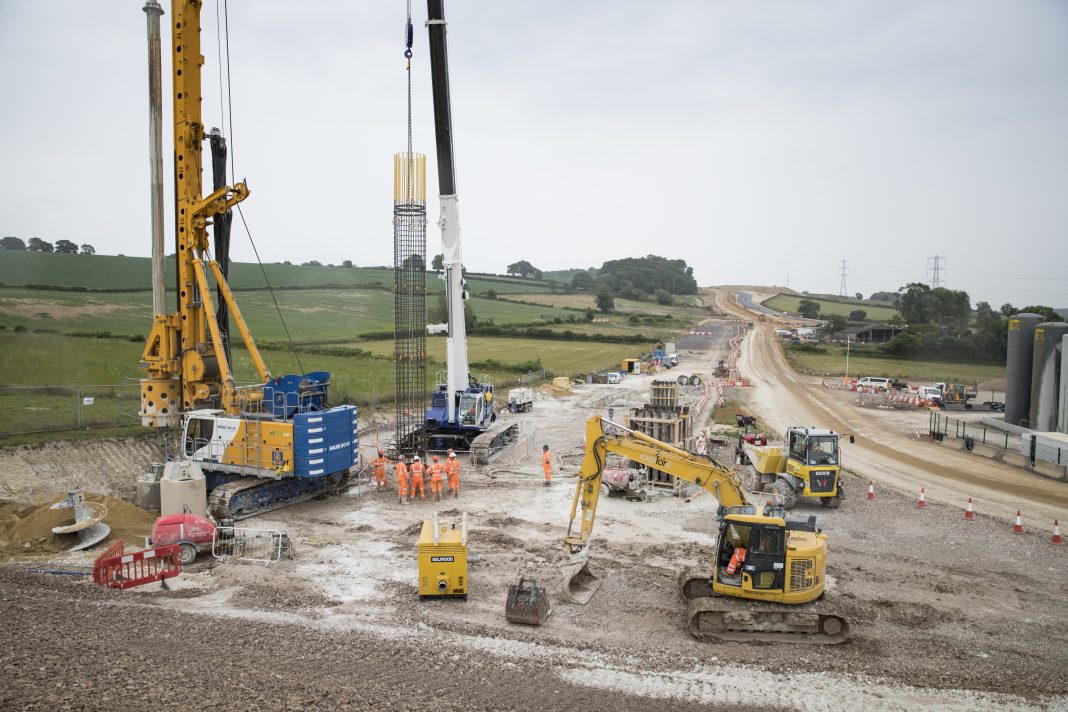An expert team of HS2 ground engineers has started work on Wendover Dean Viaduct foundations, sinking the first of more than 50 carbon-saving concrete piles
The Wendover Dean Viaduct foundations are part of the 450m long viaduct- south of the village of Wendover in Buckinghamshire- and will be the first major railway bridge in the UK to be built with a ‘double composite’ structure, using significantly less carbon-intensive concrete and steel in comparison to a more traditional design.
Over the summer, a team made up of contractors Eiffage, Kier, Ferrovial Construction and BAM Nuttal(EKFB) will construct 53 concrete piles, which will range between 38 and 46m deep, to form the foundations of the structure.
A concrete steel cap will support the pier which will support the weight of the bridge structure above. Holes will be bored and backfilled instead of hammering the 14m high piles into the ground. This approach will reduce the amount of work on site and cut disruption for local residents. The first ‘double composite’ beams will be installed next year.
Cutting disruption and saving carbon
EKFB worked with design partner ASC (a joint venture between Arcadis, Setec and COWI) and specialist architects Moxon on the ‘double composite’ approach which was inspired by structures on the French high speed TGV network.
Instead of using solid pre-stressed concrete beams to form the bridge spans, the viaduct will use two steel girders sandwiched between two layers of reinforced concrete to create a lightweight and super strong hollow span.
This approach is set to save an estimated 7,433 tonnes of embodied carbon within materials– the equivalent of someone taking 20,500 return flights from London to Edinburgh – and help HS2 achieve its goal of halving the amount of embedded carbon in construction.
Nine evenly spaced piers will support the deck of the viaduct and will be placed to carefully reflect the near symmetry of the ground beneath, reducing the silhouette of the structure viewed across the valley.
The structure beams will be made from weathering steel, which will age to a characteristically dark russet finish and echo the natural tones of the surrounding landscape.
Once complete, the historic field boundaries and hedgerows will be recreated to provide uninterrupted access for farmers and local residents. A mix of trees and shrubs commonly found across the Chiltern chalk hills will be used for new woodland planting around the viaduct, including Oak, Beech, Hazel and Wild Cherry.
“Delivering a lighter, stronger and more elegant structure”
HS2 Ltd Project client Rohan Perin said:
“HS2 trains will be zero-carbon from day one, offering a cleaner, greener way to travel, cut the number of cars and lorries on our roads, cut demand for domestic flights, and help the fight against climate change.”
“But we’re also serious about reducing the amount of carbon we use during construction, and Wendover Dean is a great example of how we’re using the latest engineering techniques to do just that. Concrete is one of the construction industries’ biggest sources of embedded carbon – and this innovative design will help us cut our carbon footprint while delivering a lighter, stronger and more elegant structure.”

















